
Philosophy
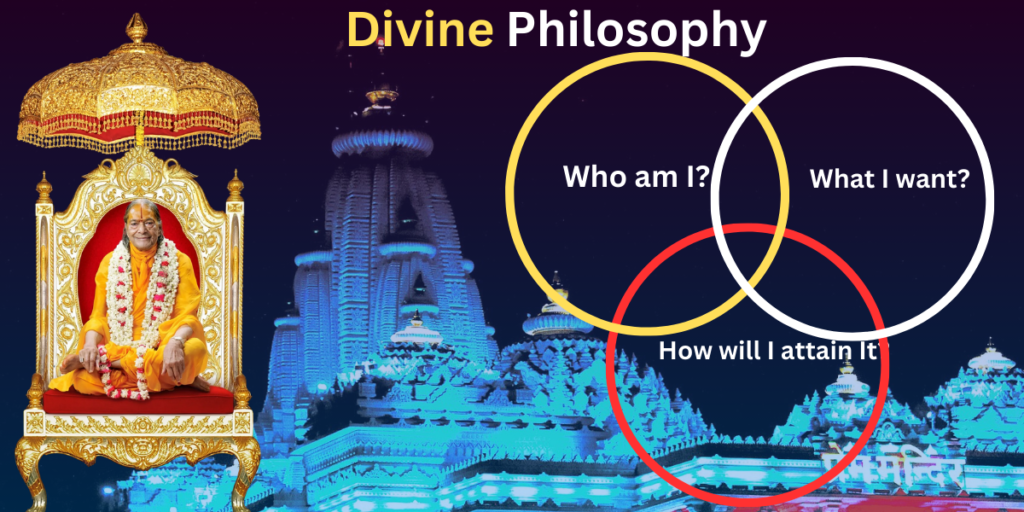
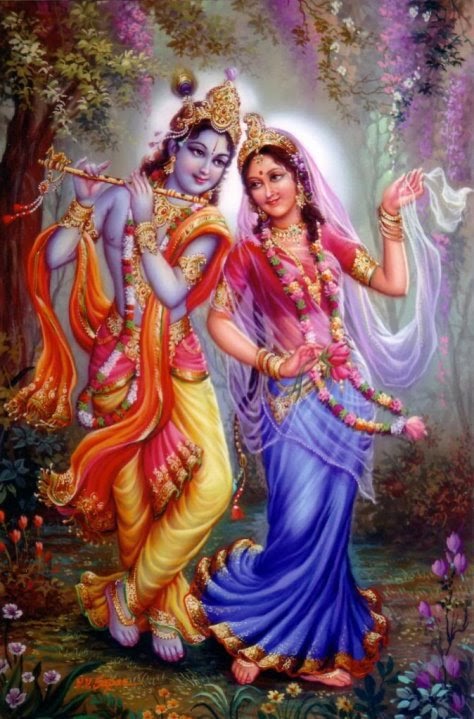
Jagaduguru Shri Kripalu Ji Maharaj has revealed the essence of all scriptures and philosophies in his devotional literatures, kirtans, pads and philosophical lectures. His philosophy concentrates on revealing the path to true happiness as described within our eternal scriptures. Every individual soul in the universe has a natural desire for unlimited happiness due to being an eternal part of Shri Krishna, who is the very embodiment of existence, knowledge and divine bliss.
At present there are mainly eleven religions (Dharm). They are Hinduism or Sanatan Dharm, Sikhism, Jainism, Buddhism, Parsi religion, Judaism (Yahudi), Islam religion, christianity, Shinto, Tao or Laozi and Confucius religion. And numerous theories from the great philosophers in the world regarding attaining the ultimate goal of happiness.
Also there is a School of Philosophies called Darshan Shastra. There are mainly six darshan shastra called as Nyay, Sankhya, Mimansa, Patanjali, Vaisheshik and Vedanta. These darshan shastra can be categorised into two types as Vedic Darshan or Aastik Darshan( Theistic ) and Avedic Darshan or Nastik Darshan (Aesthetic).
Vedic Darshan (Aastik Darshan) considers Vedas as authority and Avedic Darshan (Nastik Darshan) does not consider vedas as authority.
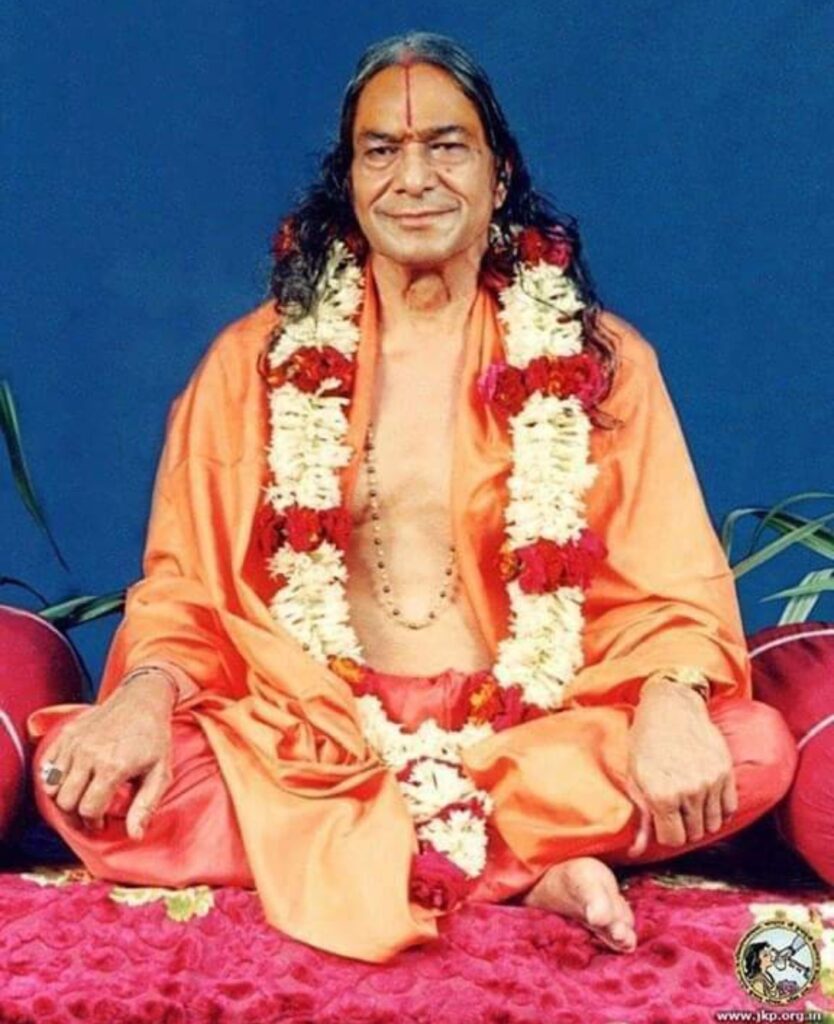
Vedic Darshan Shatra or Aastik Darshan are of two main categories as Ishwarwadi vedic Darshan (Believe in existence of GOD) and Aishwarwadi vedic Darshan (doesn’t believe in existence of GOD).
Avedic darshan or Nastik Darshan Shastra is also of two main categories Ishwarwadi Avedic Darshan (Believe in existence of GOD) and Aishwarwadi Avedic Darshan (Doesn’t believe in existence of GOD).
We focus on Vedic Darshan Shastra or Aasthik Darshan shastra of the first type i.e Ishwarwadi vedic darshan.Which is further of two main types
- Nirgun-Nirvishesh-Nirakar-Brahm-Wadi Vedic Ishwariya Darshan and, 2. Sagun-Savishesh-Sakar Vedic Ishwariya Darshan.
Sagun Savishes Sakar are of again five types
- Vishnu wadi, 2. Shiv wadi . Durga wadi 4. Ganesh wadi and Surya wadi
Worship these GOD as supreme power.
Vishnuwadi is further classified as
- Vishuddha Advait vadi or Non Dualism propounded by Jagadguru Shankaracharya
- Dvaita advait vadi Dualism and Non- Dualism propounded by Jagadguru Nimbarkacharya
- Vishishtadvaita vad pure non dualism propounded by Jagadguru Ramanujacharya
- Dvait vadi Non dualism propounded by Jagadguru madhavacharya
- Achint bheda bhed vadi by Shri Chaitanya Gaunrang Mahaprabhu
All these above theories of Jagadgurus can be considered Vaishnavacharya matavlambi which consider the ultimate aim of every soul is to attain divine bliss of happiness.
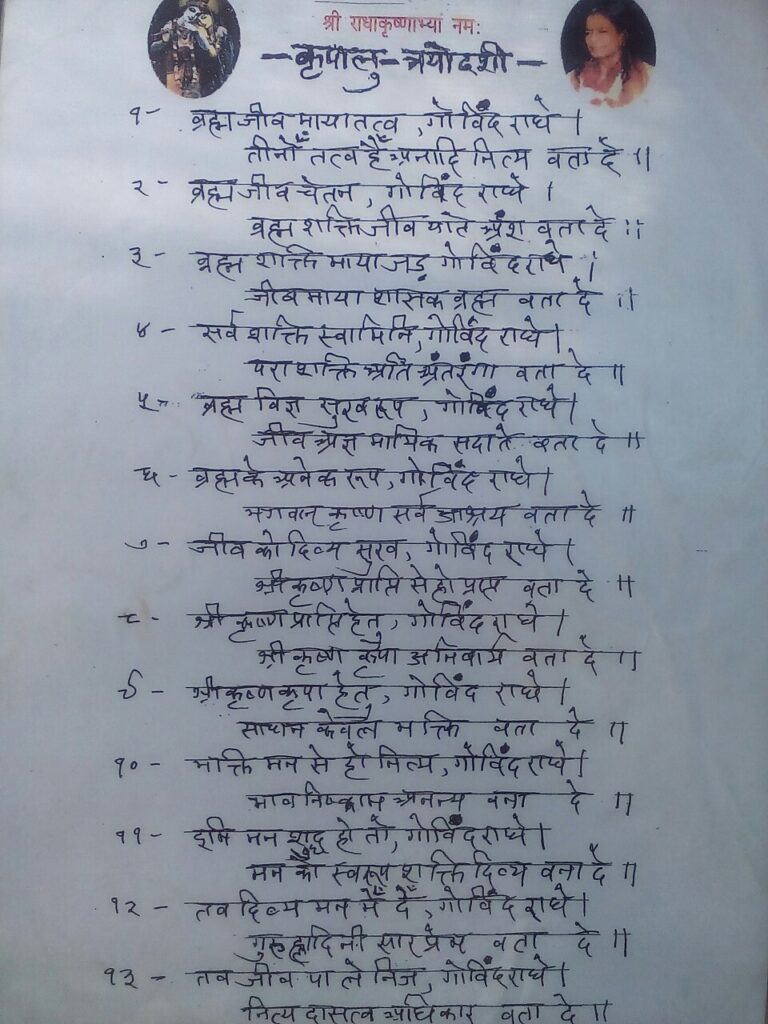
All means to attain the divine bliss of ultimate happiness can be categorised into parts as Shreya marg and Preya Marg that is the path of Spiritualism and Materialism.
Jagadguru Kripalu Ji Maharaj harmoniously reconciles conflicting religious views and philosophical theories, presenting them in a simple and easily understandable form. His teachings simplify complex concepts, fostering clarity and unity among diverse perspectives.
There are three main entities Brahm (GOD), Jeev (Soul) and Maya (material world and entire universe) . These are eternal without beginning and end.
Brahm(God): is the ultimate supreme among jeev and maya . God is all knowing and the source of divine bliss and itself is term as Anand infinite happiness in vedic scriptures. There are innumerable forms and names of GOD but Shri Krish is the only source and origin of all these forms.
Jeev (Soul) : A conscious entity inside the body is known as Atma or Jeev called as soul. Soul is what I am and not the body, mind or intellectual.This soul (Jeev) is the eternal part of God
Maya : Maya is an inert energy of God. The entire infinite universe, desire thoughts and emotions are of maya. Maya is exactly opposite of spiritual energy just like darkness and brightness. Neither the individual soul nor Maya is independent; God rules over both.
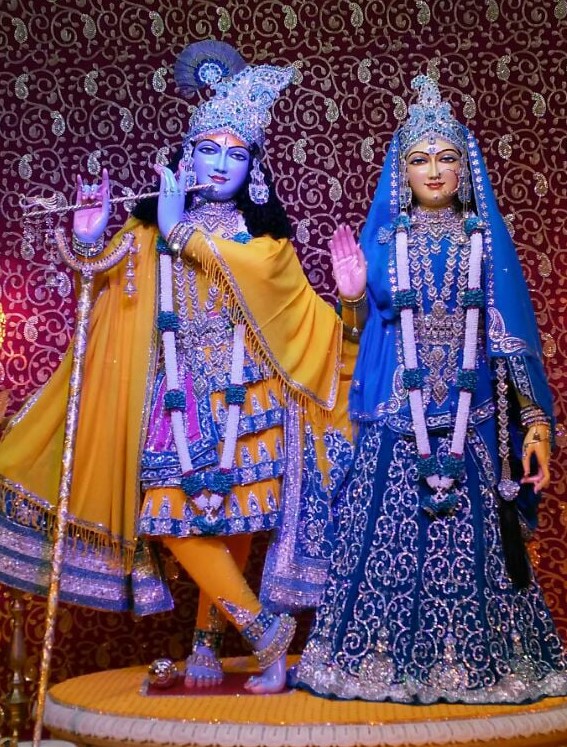
In Vedic scriptures to attain the divine bliss of happiness the ultimate goal of life three major paths are described as follows
- Karma Marg, 2. Gyan Marg and Bhakti Marg.
Karma Marg: It is Varnashram Dharma. Vedas and Smritis specify certain duties that are to be performed according to one’s Varn (caste), i.e. Brahmin, Kshatriya, Vaishya, Shudra, and one’s Ashram, or stage of life (celibate, householder, forest-dweller, renunciate).The path of Karm is both praised and condemned by Vedas and Shastras Karm dharma will only lead to happiness of Swarg or heaven which is again in the space of Maya or materialism and divine and ultimate happiness is not present in swarg as well.
Gyan Marg: Gyan is of two main types Atma Gyan and Brahma Gyan. Atma-gyan (knowledge of the self) and Brahm-gyan (knowledge of God). Atma-gyan is only knowledge soul atma. Gyani experiences the highest happiness in the state of atma gyan. The gyani says, ‘I am God.’ Devotee says, ‘I am a servant of God.’ Through Gyan Sadhana the gyani transcends the five elements and the ego; he attains Nirvikalp Samadhi (in which there are no thoughts), but he cannot attain liberation without practicing devotion to Shri Krishna. The reason is that Rajogun (mode of passion) and Tamogun (mode of ignorance) can be transcended through Gyan Sadhana, but Sattvagun (mode of goodness) remains intact, and it can be transcended only through devotion.
Bhakti Marg: Bhakti (Devotion) to God can be termed as loving selflessly and exclusively to God.Attaching the mind to the names, forms, virtues, pastimes, etc. Bhakti can be further classified as Vaidi bhakti and Raganuga bhakti
Vaidi bhakti is where the individual soul worships God to attain divine and ultimate happiness with fear of sorrow and desire of liberation from material world.
Raganuga Bhakti is where individuals soul worship God to attain divine and ultimate happiness without fear of sorrow and liberation from material world. It’s only aim is to attain divine bliss by serving God.
Both these Vaidi and Raganuga Bhakti follow Navdha Bhakti as described in scriptures. These Navdha Bhakti 9 forms of devotion are
1. Shravan,2. Kirtan,3. Smaran,4. pada sevnam, 5.Archan,6.Vandan,7. Dasya, 8. Sakhya, 9. Atmanivedan
In which Shravan, Kirtan and Smaran are main and out of which Smaran is the most important bhakti as emphasised by Shri Maharaj Ji and can only be practised through Roopdhyan sadhana as described by Shri Maharaj Ji. Through Practising this devotion, a loving connection with God is developed and seeing him as the eternal father, mother, friend, master, and soul-beloved. By surrendering to him and uniting the individual will with the divine will, the devotee attracts the grace of God and achieves the goal of ultimate spiritual happiness. Devotion Bhakti to God is the only means to attain the divine, infinite and ultimate happiness.

Above all can be summarised in the simplest way as preached by Shri Chaitanya Gaurang Mahaprabhu and described by Shri maharaj Ji as well is
Sambandh (Soul relation with God),
Abhidey(Path to attain it) and
Prayojan(Why want to attain the goal?)
It’s preached as Sambandh is with Shri Krishn , Abhidesy (Path to attain it )is Shri Krishna Bhakti Path of devotion and Prayojan ( motive and why?) The ultimate aim of happiness is to serve Shri Krishn
These is further simplified into 4 steps as
Step 1:
Who am I: Main Kaun? Mera Kaun? what is our Relation with God Sambandh
A conscious entity inside the body is known as Atma or Jeev. Is what I am and not the body, mind or intellectual. All the creatures of this mortal world having life are called jeev. The other names of jeev are Atma, spirit, inner self, soul etc.Jeev is a conscious entity and it is an inseparable and eternal part of God since all the individual souls are the revelation of God’s Jeev power.
Relation of Soul with God: Every soul is the servant Das of its master Swami God. Soul has a relationship with God as his eternal father, mother, friend and beloved.
Step 2
What I want: Since every soul is the eternal part of God. Shri Krishn is the supreme power and God itself is termed as divine and infinite happiness. Hence every jeev soul has natural desire of happiness. This happiness is unlimited in quantity , its for infinite time , and its keep on incrementing exactly opposite of materialistic happiness which is limited in quantity, for finite time and keep on decreasing and finally in the end we experience sorrow.
Step 3:
How will I attain it: As described in vedic scriptures The ultimate divine and infinite happiness can be achieved only by devotion bhakti. The devotion bhakti of Supreme God Shri krishn this involved attaching mind to the name, form, virtues and pastime of god. This attachment of mind is only possible through Roopdhyan sadhana as explained by shri maharaj Ji. This bhakti is only possible with the help and guidance of Guru, a God realised saint as per spiritual Law. It is through the Guru’s grace once the mind is purified through practising devotion jeev receive the divine and spiritual happiness and power Hence every soul needs to surrender to Guru and practise devotion sadhana bhakti as guided by Guru. Its because of guru’s grace only jeev can attain enlightenment and spiritual happiness.
Step 4:
Why I want to attain it : Every soul is an eternal servant of God, Shri Krishna. The natural nature of every soul and ultimate aim is to bring joy to Shri Krishna without any personal desires, known as Nishkam Bhakti. By making Shri Krishna happy, the soul attains divine and infinite happiness, fulfilling its purpose in serving and pleasing the God.
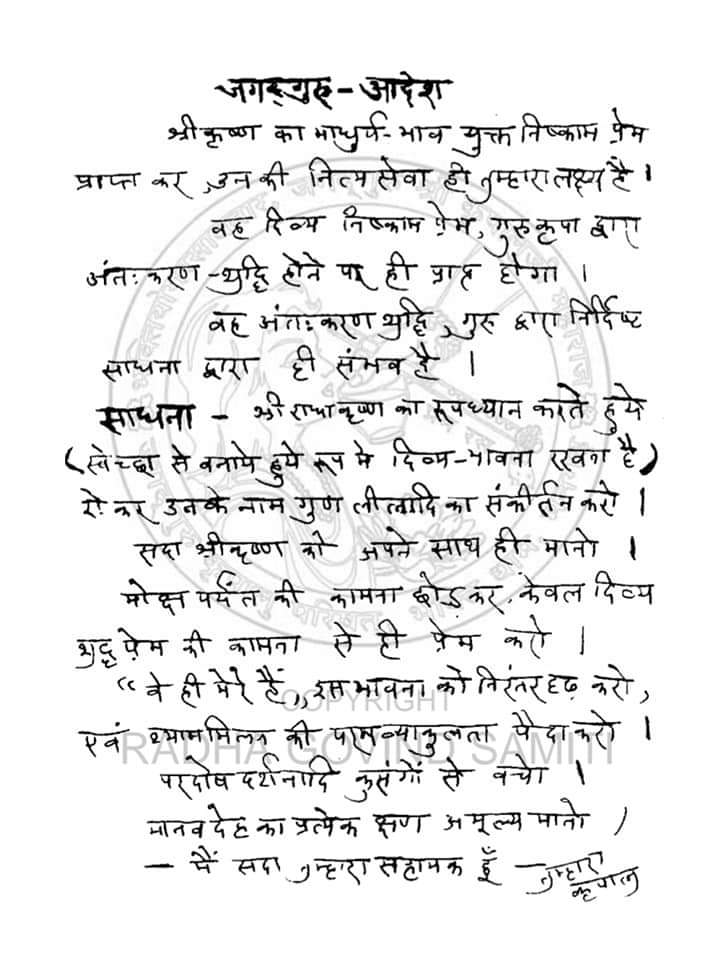
Jagadguru Kripalu Ji Maharaj philosophy is the highest and ultimate philosophy among all the philosophies of prior Jagadgurus, saints and religious scriptures. Presented in simple language, it offers profound wisdom accessible to everyone. Its simplicity ensures that individuals easily grasp and benefit from its profound teachings, making it a unique and invaluable spiritual guide.